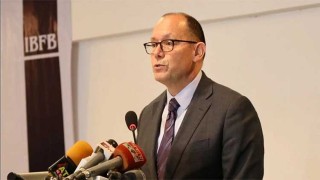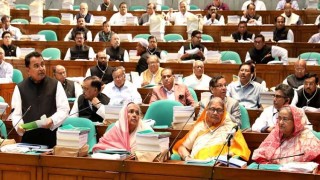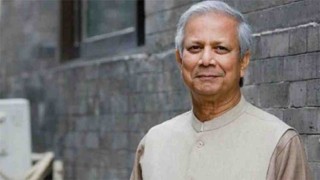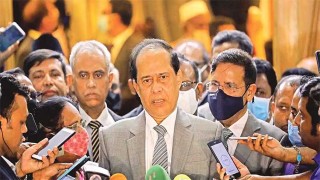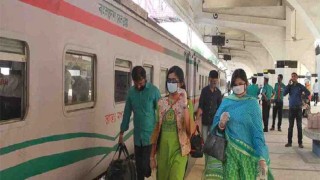Social protection should be increased to eliminate child labour
12 June 2022, 02:26 pm | Updated: 04 April 2025, 09:48 pm

The United Nations International Labor Organization (ILO) has been observing ‘World Day Against Child Labor’ since 2002 to protect children's rights and eliminate risky child labour. This day is celebrated on the 12th of June every year in different countries of the world including Bangladesh. This year the theme of the day is 'Universal Social Protection to End Child Labor'.
A report jointly published by the ILO and UNICEF states that at the beginning of 2020, 1 in 10 children aged 5 years and older were involved in child labour worldwide--an estimated number of them are 160 million. Of these, 63 million are girls and 97 million are boys. The report says that despite significant progress in reducing child labour over the past two decades, the latest data shows that global progress in eliminating child labour has stalled since 2016.
The report further states that the COVID-19 pandemic has put millions more children worldwide at risk of child labour. It is estimated that without proper mitigation strategies, 8.9 million children could be re-engaged in child labour by the end of 2022 due to high poverty and growing uncertainty and fragility.

In this situation, the ILO has suggested that strong social security measures are needed to reduce and eliminate child labour. Reducing the risk and fragility of family poverty, increasing livelihood projects and assisting children in school enrollment, government social security measures are essential in the fight against child labour and prevention. The ILO says several studies conducted since 2010 have shown that social protection helps families cope with economic or health shocks, reduces child labour and facilitates schooling.
It also says little progress has been made in ensuring that all children enjoy social security. Worldwide, 73.6 per cent or about 1.5 billion children between the ages of 0 and 4 do not receive any social security benefits. This large security gap must be closed quickly. ILO Director-General Guy Ryder says there are many reasons to invest in universal social security, but the elimination of child labour must be the most compelling because of its detrimental effect on children's rights and well-being.
According to the ILO study, governments in different countries have different policies that they can apply to social security. If policymakers do not make the right decisions, the COVID-19 pandemic, ongoing conflict, growing poverty and climate change will exacerbate child labour.
Looking at the scenario of child labour in our country is no less worrying. According to a 2013 BBS survey, about 1.7 million children in Bangladesh work in 16 sectors. According to the ILO, more than 1.5 lakh children are involved in dangerous activities in Dhaka city alone. But statistics are not needed to understand that reality is completely different. In our country children usually work in agriculture, factories, public transport, housing, food shops, various business establishments, brick kilns and construction work. Child labour has increased rapidly during the COVID-19 pandemic. One of the main reasons for the increase in child labour is poverty and inequality. If poverty and inequality increase in this way, the fear of increasing child labour in the coming days is not unreasonable.
During the COVID-19 pandemic, many children dropped out of school and joined work. Thus, children who are forced to engage in child labour are not only deprived of education but also social and health care. Because, schools are an important source of social protection, nutrition, health as well as psychosocial support for children and young adults. Therefore, children engaged in child labour are at risk of physical and mental harm. Child labour disrupts children's education, limits their rights and future opportunities, and pushes them into the vicious cycle of poverty and child labour.
The United Nations has set specific targets for the elimination of child labour by 2025. The SDG target 8.7 also called for immediate and effective measures to eliminate forced labour, modern slavery and human trafficking, and to ban and eliminate the worst forms of child labour. SDG sub-target 16.2 refers to the employment and use of child labour, the elimination of exploitation, trafficking and all forms of violence and abuse, and the elimination of all forms of child labour.
The Government of Bangladesh is committed to achieving the SDG targets set by the United Nations. Therefore, the government has various consultations to eliminate child labour. A number of initiatives, projects and programs have been undertaken under the departments and ministries of the Bangladesh government. Besides, national and international NGOs are also implementing various projects and programs for the elimination of child labour. But now it seems that the target will be difficult to achieve because the level of child labour is not decreasing but it has started to increase again due to the ongoing COVID-19 pandemic and war between Russia and Ukraine. So it goes without saying that many more initiatives are needed for the growing child labour during the pandemic and unstable time.
According to a UNICEF report, the social security system in Bangladesh is still highly fragmented. The social security system has 130 programs that in most cases are not connected. The goals of these programs coincide with each other, with a small budget and inadequate coverage. Investment in children and social security is important for any country from any perspective. Social safety nets for children protect human rights and the economy.
The ILO and UNICEF have called on world leaders or heads of government to reverse the rising trend of child labour. For example, providing adequate social security for all, including universal child care, increasing the cost of quality education and bringing all children back to school, including those who have been out of school since before COVID-19, and arranging suitable work for the adults in the family so that the families do not have to resort to children to help increase the family income, eliminate harmful sexual practices and inequalities that affect child labour, invest in child protection systems, agricultural development, rural public services, infrastructure and livelihoods and so on.
So, it is time to think about the children who are struggling to make a living by selling their childhood due to the ongoing pandemic and war and the scourge of poverty. Officially, it has become mandatory for these children and their families to be brought into the social security system. The rich people of the society also need to come forward in this regard. There is a need to intensify the movement for social initiative and awareness-raising to eradicate child labour. It is also important to raise awareness of those who force children into child labour and exploit them. At the same time, it is time to reduce the growing poverty and income inequality and ensure quality and life-oriented education for all children and also to think about the role they can play in building a beautiful and prosperous Bangladesh in the future.
The writer is a researcher and development worker










